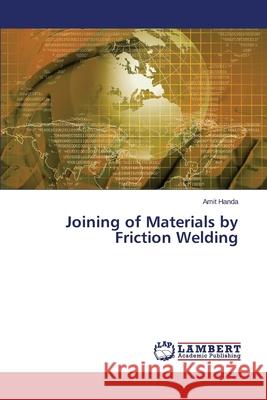Joining of Materials by Friction Welding » książka
Joining of Materials by Friction Welding
ISBN-13: 9783847370024 / Angielski / Miękka / 2013 / 156 str.
Welding is an important and versatile fabrication process that is used in almost all the industries. There are several welding processes which are being used; one of them is the friction welding, which is now extensively considered by many industries for its possible use for many specialized purposes. Friction welding has many advantages over the other welding processes such as low production cost, ability to weld dissimilar metals, as well as plastics, non requirement of filler metal and less heat effected zone. A friction welding setup was fabricated with appropriate modifications on a conventional lathe machine. The main objective of present study is to optimize the process parameters for achieving reliable friction welds between Mild Steel bars. Two process parameters namely rotational speed and axial pressure were selected for optimization after a comprehensive literature review. Friction welded specimens were made on the setup using 25mm, 30mm and 34mm diameter MS rods by application of several combinations of the axial pressure and speed of rotation. Axial pressures were applied in the range of 60-135kg/cm whereas rotational speed was varied in the range of 520-1200rpm.
Welding is an important and versatile fabrication process that is used in almost all the industries. There are several welding processes which are being used; one of them is the friction welding, which is now extensively considered by many industries for its possible use for many specialized purposes. Friction welding has many advantages over the other welding processes such as low production cost, ability to weld dissimilar metals, as well as plastics, non requirement of filler metal and less heat effected zone. A friction welding setup was fabricated with appropriate modifications on a conventional lathe machine. The main objective of present study is to optimize the process parameters for achieving reliable friction welds between Mild Steel bars. Two process parameters namely rotational speed and axial pressure were selected for optimization after a comprehensive literature review. Friction welded specimens were made on the setup using 25mm, 30mm and 34mm diameter MS rods by application of several combinations of the axial pressure and speed of rotation. Axial pressures were applied in the range of 60-135kg/cm² whereas rotational speed was varied in the range of 520-1200rpm.











